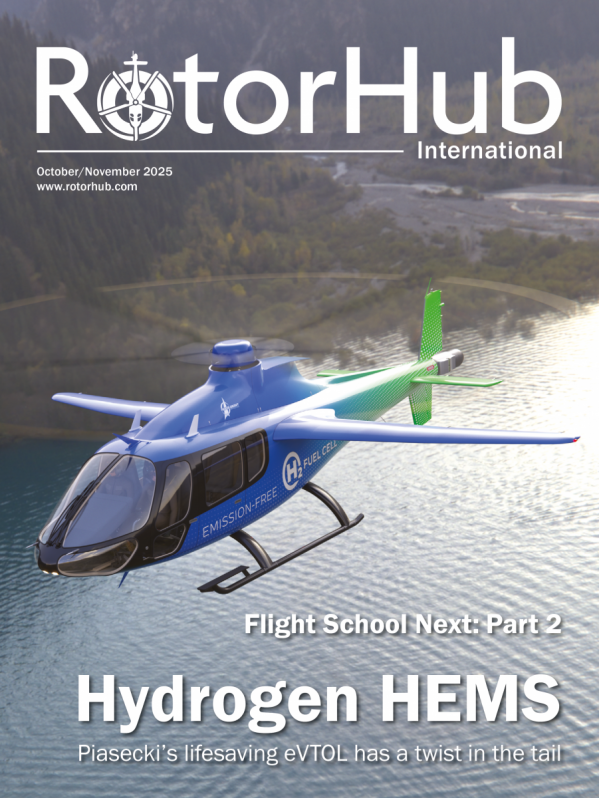
Predictive, Proactive and Powered by People: Gama Aviation’s Rotary Expertise Featured in RotorHub International
Gama Aviation’s rotary specialists have once again been recognised as trusted voices within the global helicopter maintenance community, sharing their insights in RotorHub International’s October/November issue.
The feature explores how predictive maintenance, data-driven analysis and AI-assisted diagnostics are redefining rotary MRO — and why human expertise remains central to every development.
From Reactive to Predictive
Across the industry, predictive maintenance is no longer a future concept — it is a tangible reality driving improvements in efficiency, safety and aircraft availability.
For Gama Aviation’s rotary maintenance teams, this shift has been accelerated by the intelligent use of data captured through advanced Health and Usage Monitoring Systems (HUMS) and Flight Data Monitoring (FDM) processes.
Ryan Evans, Line Maintenance Manager (Rotary), explains how these systems have transformed the way maintenance is delivered:
“Engineers are no longer constrained to printed manuals – instead, they can access dynamic, live-linked AMM tasks and references at the point of work.
Data capture and analysis now sit at the heart of modern MRO — from trend analysis and predictive maintenance to the ability to plan component actions with greater precision.”
Gama Aviation applies HUMS and vibration trend monitoring extensively across its supported rotary platforms — including the Airbus H145 and Leonardo AW169 and AW139 — to detect early signs of component wear or degradation.
By turning data into insight, maintenance actions such as component realignments or replacements can be planned proactively, minimising downtime and keeping clients’ aircraft mission-ready.
Balancing Technology with Human Judgment
While digital systems have created significant efficiencies, Gama Aviation believes the human factor remains irreplaceable.
Jon Harris, Base Maintenance Manager (Rotary), notes that predictive technology must enhance — not replace — the critical thinking and physical oversight of licensed engineers:
“AI and digital data should be used as advisory tools, but the final certification must always be supported by a physical inspection conducted by a licensed aircraft engineer.
Predictive systems can tell you what might be happening — but experience and observation confirm what actually is.”
This balanced approach ensures that the benefits of automation and analytics are fully realised without compromising safety, quality or regulatory integrity.
Towards a Live Data Environment
Looking ahead, the rotary division is focused on the next stage of digital development. This live HUMS/FDM approach would enable real-time communication between aircraft in service and the maintenance organisation.
Such a capability would allow Gama Aviation to receive immediate component health updates and fault codes, enabling engineers to pre-position spares, allocate manpower more efficiently, and resolve issues before the aircraft returns to base.
As Harris explains:
“The overarching aim for any future technological development is simple — to improve reliability data, reduce unplanned downtime and maximise aircraft availability.”
The Gama Difference
Gama Aviation’s rotary MRO capability supports a wide range of platforms and missions, combining decades of engineering expertise with the latest advancements in digital systems, tooling and training.
Whether managing scheduled inspections, troubleshooting in the field, or providing around-the-clock AOG support, the company’s rotary engineers continue to set the standard for reliability and responsiveness.
The feature in RotorHub International highlights not only the technological progress shaping helicopter maintenance but also the professionalism and depth of experience that define Gama Aviation’s approach.
By pairing innovation with human insight, Gama Aviation continues to lead the evolution of predictive and proactive rotary maintenance — ensuring every aircraft is ready to perform when it matters most.
Read the full article in the October/November issue of RotorHub International, click here
